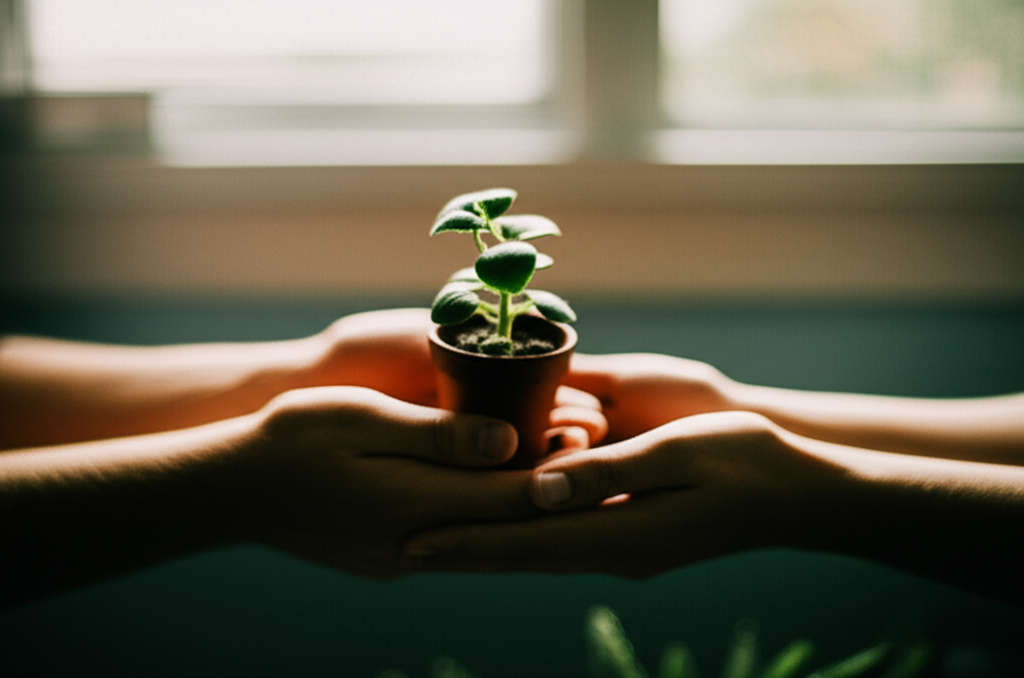Vegan Leather vs. Traditional Leather: A Comparison
Ellie Moore

Photo: Vegan Leather vs. Traditional Leather: A Comparison
Vegan Leather vs. Traditional Leather: A Comprehensive Comparison
Leather has long been synonymous with luxury, durability, and timeless style. However, in recent years, the growing demand for more sustainable and cruelty-free alternatives has brought vegan leather into the spotlight. As eco-conscious consumers seek alternatives to animal products, vegan leather has become a popular choice for those who want to enjoy the look and feel of leather without the ethical and environmental concerns.
In this article, we’ll dive into a detailed comparison between vegan leather and traditional leather. We’ll explore the production processes, environmental impacts, durability, cost, and overall appeal of each, so you can make an informed decision about which option is best for you.
What is Vegan Leather?
Vegan leather, also known as faux leather or synthetic leather, is a man-made material designed to mimic the look and feel of natural leather without the use of animal products. It can be made from various materials, including polyurethane (PU), polyvinyl chloride (PVC), and even plant-based materials like pineapple leaves (Piñatex), mushroom leather, or apple peels.
Types of Vegan Leather
- PU Leather: One of the most common forms of vegan leather, PU leather is made by coating a fabric (usually polyester) with a polyurethane layer. It’s durable, flexible, and resembles real leather closely.
- PVC Leather: PVC leather is made using polyvinyl chloride, which is a type of plastic. While it’s less eco-friendly than PU leather, it is still a popular option due to its versatility and low cost.
- Plant-Based Leathers: These are newer and more eco-conscious alternatives, made from sustainable plant materials. Piñatex (made from pineapple fibers) and apple leather (made from apple waste) are notable examples of plant-based vegan leathers.
What is Traditional Leather?
Traditional leather, often referred to as "genuine leather," is a natural material made from the tanned skin of animals, usually cows, pigs, or goats. The process of turning raw animal hides into leather involves tanning, dyeing, and treating the material to create a durable, flexible product that can be used for everything from clothing to furniture.
While leather has been prized for its durability, comfort, and luxurious appearance for centuries, the environmental and ethical concerns surrounding animal leather have led many consumers to seek alternative options.
The Leather Tanning Process
The traditional leather-making process involves several key steps:
- Tanning: Leather is treated with tannins (either vegetable or chemical) to prevent decay and preserve the material.
- Dyeing: Leather is dyed to achieve the desired color, often using synthetic dyes.
- Finishing: Leather is coated with various substances like oils and waxes to improve texture, sheen, and durability.
Key Differences: Vegan Leather vs. Traditional Leather
Now that we have a better understanding of what both materials are, let’s explore the main differences between vegan leather and traditional leather across several key factors.
1. Production Process
Vegan Leather: The production of vegan leather varies depending on the material used. While some vegan leathers are made from plastics like PU or PVC, others are created from renewable resources, such as pineapple fibers, apple peels, or even fungi. This means that certain types of vegan leather are more sustainable, though others (especially those made with PVC) can have a significant environmental impact.
Traditional Leather: Traditional leather is made from animal hides, typically cow or sheep, and involves a complex, resource-intensive process. The tanning process, while necessary for preservation, often uses harmful chemicals, including chromium salts, which can contribute to water pollution. Additionally, raising animals for leather production requires vast amounts of land, water, and feed.
2. Environmental Impact
Vegan Leather: While vegan leather avoids the ethical concerns of animal farming, its environmental impact can still vary depending on the materials used. For instance, PU and PVC are synthetic plastics that do not biodegrade and may release harmful toxins when incinerated. On the other hand, plant-based leathers like Piñatex or apple leather are much more sustainable, using agricultural waste and requiring fewer resources to produce.
Traditional Leather: Leather production has a considerable environmental impact, primarily due to the resources required to raise animals and the chemicals used in tanning. Animal agriculture is a significant contributor to greenhouse gas emissions, deforestation, and water pollution. However, traditional leather is biodegradable, and high-quality leather products can last for decades, which may reduce the overall need for replacement.
3. Durability and Longevity
Vegan Leather: Vegan leather can vary widely in durability depending on the type. High-quality PU leather can be quite durable, offering years of use, while lower-quality synthetic options may crack and wear out over time. Plant-based vegan leathers, though still relatively new, have shown promising results for durability, often being comparable to traditional leather in terms of wear and tear.
Traditional Leather: One of the main advantages of traditional leather is its longevity. With proper care, leather products can last for decades, even improving in appearance and comfort over time. Leather tends to develop a patina, which gives it a unique, worn-in look. While it can be susceptible to scratches or water damage, high-quality leather products are often repaired rather than replaced, making them a long-lasting investment.
4. Cost
Vegan Leather: In general, vegan leather tends to be more affordable than traditional leather. This is because the materials used in vegan leather (especially synthetic ones) are often less expensive to produce than animal hides. However, plant-based options or high-quality vegan leathers may be priced similarly to traditional leather.
Traditional Leather: Traditional leather products are typically more expensive due to the high cost of raw materials, labor, and the extensive tanning process. However, because leather is long-lasting, many people view it as a worthwhile investment. It is also considered more premium in many cases, leading to higher price tags for high-end leather goods.
5. Aesthetic Appeal and Feel
Vegan Leather: While modern vegan leathers are impressively close to the look and feel of traditional leather, they may not have the same depth or texture. The tactile feel of vegan leather can differ from animal leather, with some types feeling stiffer or less luxurious. However, advancements in technology have led to significant improvements, and high-quality vegan leathers often replicate the appearance and feel of real leather very well.
Traditional Leather: Traditional leather is renowned for its luxurious texture and natural grain, which is often regarded as superior to synthetic alternatives. It also has a distinct smell, which many leather enthusiasts love. The aging process gives leather an irreplaceable character and a unique patina that adds to its appeal.
6. Ethical Considerations
Vegan Leather: The primary ethical advantage of vegan leather is that it does not involve animal cruelty. Those who choose vegan leather do so because they wish to avoid contributing to the demand for animal products and the ethical concerns associated with animal farming. For many, this is the most compelling reason to choose vegan leather over traditional leather.
Traditional Leather: The ethical concerns surrounding traditional leather primarily stem from animal rights issues. Leather production contributes to the demand for animal farming, which raises questions about the treatment of animals in the industry. However, some consumers opt for leather made from by-products of the meat industry, feeling that it is more ethical than using animals exclusively for leather production.
Final Thoughts: Which One Should You Choose?
Both vegan leather and traditional leather have their merits, but your choice depends on your priorities whether it's environmental impact, durability, cost, or ethical concerns.
If you're looking for a cruelty-free option that aligns with sustainability, plant-based vegan leathers like Piñatex or mushroom leather may be your best bet. If durability, classic aesthetics, and long-lasting quality are your priorities, traditional leather might still be the way to go.
Key Takeaways:
- Vegan Leather: A cruelty-free, environmentally friendlier alternative, especially when made from plant-based materials. It’s often more affordable but can vary in durability.
- Traditional Leather: Durable, timeless, and luxurious but comes with ethical and environmental concerns.
Ultimately, the choice is yours. Both materials have their pros and cons, so take into account your personal values, lifestyle, and budget to make the best decision.
Frequently Asked Questions (FAQs)
Is vegan leather better for the environment? It depends on the type of vegan leather. Plant-based options are far more eco-friendly, while synthetic versions like PU and PVC can contribute to pollution.
Can vegan leather be as durable as real leather? High-quality vegan leather, especially plant-based options, can be just as durable as traditional leather, although some synthetic varieties may not last as long.
Does vegan leather feel like real leather? Some high-quality vegan leathers come close in texture and appearance to real leather, though the feel may differ slightly depending on the material.
Is traditional leather worth the investment? If longevity and timeless style are important to you, traditional leather can be a worthwhile investment. However, it’s important to consider ethical and environmental factors.
Finance & Investment
View All
September 9, 2025
Nonprofit Finance Fund InformationMaster expert SEO content to rank higher, drive traffic, and build authority. Discover strategies for audience intent, keyword research, and E-E-A-T.
Ellie Moore

January 5, 2025
Finance of America Reverse GuideUnlock the secrets of expert SEO content! Learn to create valuable, user-centric information that satisfies intent and ranks, moving beyond keyword stuffing.
Ellie Moore

June 5, 2025
Car Loan Finance Calculator OnlineDominate 2025 search with expert SEO content! Learn to create high-value, authoritative content that ranks, builds trust, and deeply satisfies user intent.
Ellie Moore

November 22, 2024
Smart Strategies for Managing Student Loan Repayments in 2024Conquer student loan debt with smart strategies for 2024! Learn how to manage repayments, explore repayment plans, and save money. Start taking control of your financial future!
Ellie Moore

November 23, 2025
American Honda Finance Contact InfoMaster expert SEO content to rank higher and connect with your audience. Learn how E-E-A-T drives high-quality, trustworthy content for search engine success.
Ellie Moore

April 26, 2025
Finance Yahoo News and UpdatesUnlock top Google rankings & engaged readers with expert SEO content. Learn to create valuable, authoritative, user-centric content for digital success.
Ellie Moore
Insurance
View AllRenting comes with risks. Safeguard your belongings, finances, and peace of mind with Allstate Renters Insurance. Explore coverage, costs, and essential benefit...
Ellie Moore
Safeguard your rental assets with Lemonade Renters Insurance. Get smart, comprehensive, and affordable coverage for ultimate peace of mind.
Ellie Moore
Navigate rising premiums! Discover top-rated car insurance deals, compare rates, and secure superior coverage with our expert guide.
Ellie Moore
Learn how gig workers can protect themselves with insurance solutions designed for freelance and flexible work.
Ellie Moore
Secure unparalleled protection and peace of mind for your vehicle with Premium Allstate Auto Insurance. Explore essential coverage and benefits.
Ellie Moore
Moving abroad? Learn everything about international health insurance, from coverage options to must-have benefits for expats.
Ellie Moore
Education
View AllUnderstanding memory is key to better teaching. Learn how memory functions and how to use this knowledge to enhance teaching techniques.
Read MoreExplore how emotional intelligence impacts academic performance. Learn strategies to help students develop emotional skills for better learning outcomes.
Read MoreExplore the ongoing debate on standardized testing. Learn its pros, cons, and whether it should remain a key part of education.
Read MoreDiscover why liberal arts education remains valuable in today’s tech-driven world. Explore how it fosters critical thinking and adaptability.
Read MoreEthics in education is vital for balanced learning. Learn how to teach morality alongside knowledge transfer in today’s classrooms.
Read MoreLearn effective classroom strategies to manage ADHD. Discover how teachers can support students with ADHD for better learning outcomes.
Read MorePopular Post 🔥
View All
1
2
3
4
5
6
7
8
9
10
Health






Automotive
View All
July 30, 2025
Automotive AC Service Near Me For Cool Drives
Ensure cool, comfortable drives! This guide covers car AC service, common issues, and finding reliable repair to keep your vehicle's AC running perfectly.

July 12, 2025
Guide To Maintaining Automotive Clear Coat Finish
Keep your car looking new! Learn essential tips to protect your clear coat, prevent damage, and maintain its showroom shine & value.

August 16, 2025
How Automotive Lift Movers Make Work Easier
Transform your garage with automotive lift movers! Explore how portable and mobile lifts offer unmatched flexibility, efficiency, and safety.

February 5, 2025
Understanding Car Engines: Types & Their Benefits
Confused about car engines? Learn about different engine types, how they work, and which one is best for your driving needs. Start learning now!

February 14, 2025
Biofuels in Cars: Renewable Energy’s Bright Future
Explore the future of renewable energy in automobiles. Learn how biofuels are shaping the next generation of sustainable vehicles.

September 5, 2025
Best Deals On Automotive Tint Near Me
Get the best deals on automotive tint near you! Enhance privacy, reduce heat & UV, and boost style with our comprehensive guide.

















